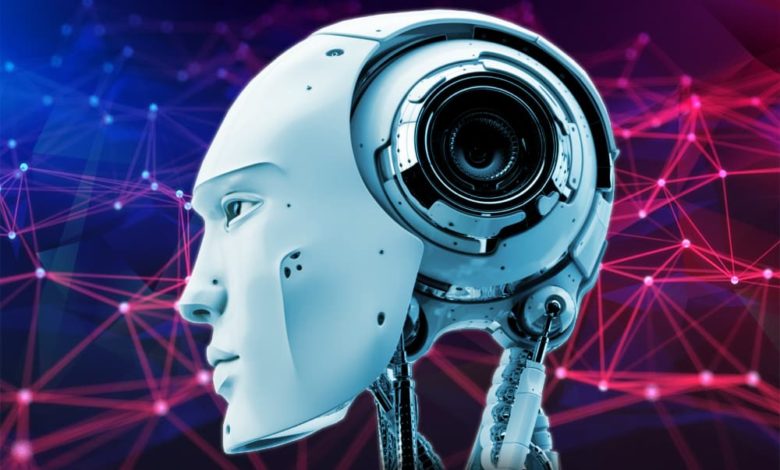The Future of Marketing: Navigating the Digital Revolution

Marketing has undergone profound transformations over the years, and the pace of change is accelerating. In today’s digital age, businesses must adapt to ever-evolving consumer behavior, emerging technologies, and shifting market dynamics. In this comprehensive guide, we’ll explore the future of marketing, from the rise of artificial intelligence to the impact of data privacy regulations, and provide insights to help marketers thrive in the digital revolution.
Chapter 1: The Evolution of Marketing
1.1 From Traditional to Digital
Marketing has transitioned from traditional mediums like print and TV to digital platforms, where businesses can reach a global audience in real time.
1.2 The Power of Data
Data analytics has become central to marketing strategies, allowing for precise targeting, personalized messaging, and performance measurement.
1.3 Consumer-Centric Approach
Modern marketing prioritizes the customer experience, focusing on building relationships and providing value to consumers.
Chapter 2: Artificial Intelligence (AI) in Marketing
2.1 AI-Powered Automation
AI automates repetitive tasks like data analysis, customer segmentation, and content personalization, freeing marketers to focus on strategy and creativity.
2.2 Predictive Analytics
AI algorithms analyze vast datasets to predict consumer behavior and trends, enabling proactive marketing strategies.
2.3 Chatbots and Virtual Assistants
AI-driven chatbots and virtual assistants enhance customer support and engagement, providing instant responses and personalized experiences.
Chapter 3: Data-Driven Marketing
3.1 Big Data
The collection and analysis of large datasets offer deep insights into consumer behavior, allowing for more targeted campaigns and product development.
3.2 Personalization
Data-driven marketing enables personalized content and recommendations, enhancing customer satisfaction and loyalty.
3.3 Privacy Concerns
The use of consumer data raises privacy concerns. Striking a balance between data-driven marketing and privacy regulations is a significant challenge.
Chapter 4: Content Marketing in the Digital Age
4.1 Content Creation
High-quality, relevant content remains at the core of successful digital marketing strategies, driving brand awareness and engagement.
4.2 Video Marketing
Video content continues to grow in popularity, offering engaging and shareable experiences for consumers.
4.3 User-Generated Content
Brands leverage user-generated content to build trust and authenticity, encouraging customers to become advocates.
Chapter 5: Social Media Marketing
5.1 The Power of Social Platforms
Social media platforms provide businesses with direct access to billions of potential customers, making them essential marketing channels.
5.2 Influencer Marketing
Collaborating with influencers amplifies brand reach and credibility, particularly among niche audiences.
5.3 Social Commerce
Social platforms are evolving into e-commerce hubs, enabling direct product discovery and purchase within apps.
Chapter 6: Omnichannel Marketing
6.1 Seamless Customer Journeys
Omnichannel marketing ensures consistent and integrated experiences across all customer touchpoints, both online and offline.
6.2 Mobile Marketing
Mobile devices dominate online interactions, emphasizing the need for mobile-optimized content and advertising.
6.3 Voice Search
The rise of voice-activated devices and virtual assistants requires marketers to adapt their SEO and content strategies.
Chapter 7: Marketing Automation
7.1 Efficiency and Personalization
Marketing automation tools streamline workflows and enable personalized, timely communication with customers.
7.2 Email Marketing Automation
Automated email campaigns deliver tailored messages based on customer behavior, improving engagement and conversions.
7.3 AI-Driven Marketing Automation
AI enhances marketing automation by optimizing ad placements, content recommendations, and audience targeting.
Chapter 8: The Future of Advertising
8.1 Programmatic Advertising
Programmatic advertising, powered by AI, automates ad buying and placement, improving targeting and ROI.
8.2 Augmented Reality (AR) Advertising
AR ads blend the physical and digital worlds, providing immersive brand experiences.
8.3 Privacy and Ad Tracking
Privacy regulations and changes to ad tracking practices challenge the traditional advertising landscape.
Chapter 9: Marketing in a Post-Pandemic World
9.1 Digital Transformation
The COVID-19 pandemic accelerated digital transformation, pushing businesses to adapt to online sales and marketing strategies.
9.2 Remote Work and Collaboration
Remote work tools and platforms have become essential for marketing teams, fostering collaboration and flexibility.
9.3 Resilience and Agility
Marketers must remain agile and prepared for unforeseen disruptions, emphasizing adaptability and resilience.
Chapter 10: Ethical Marketing
10.1 Transparency
Ethical marketing requires transparency in advertising, data collection, and customer communication.
10.2 Sustainability
Sustainability and corporate social responsibility are increasingly important to consumers, shaping brand image and loyalty.
10.3 Responsible AI
AI-driven marketing must be ethical, avoiding biases and respecting privacy and consent.
Chapter 11: The Future Marketer
11.1 Versatility
Future marketers need a diverse skill set, encompassing data analysis, content creation, AI utilization, and ethical practices.
11.2 Lifelong Learning
The marketing landscape evolves rapidly, necessitating continuous learning and adaptation.
11.3 Agility and Innovation
Marketers must embrace change, experiment with new technologies, and foster a culture of innovation.
Chapter 12: Conclusion
The future of marketing promises both challenges and opportunities. Embracing digital transformation, harnessing the power of AI and data, and prioritizing ethical practices are essential for success in the evolving marketing landscape. As the digital revolution continues, marketers who stay informed, adaptable, and consumer-centric will thrive in this dynamic and exciting field.



